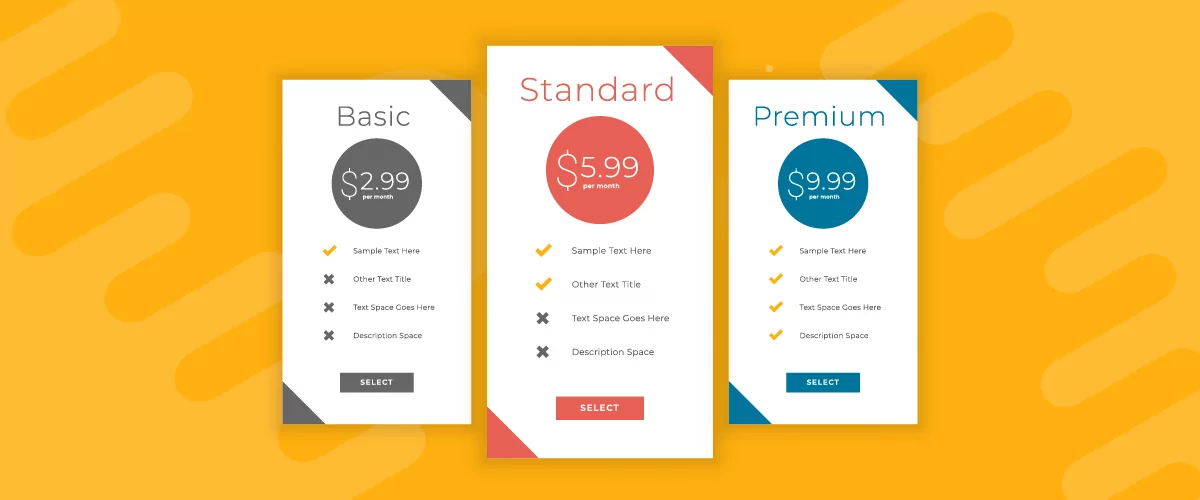
Table of Contents
- 1 What Are Membership Level Names?
- 2 Why Do Membership Level Names Matter?
- 3 Eight Different Approaches to Subscription Plan Names + Real Examples
- 3.1 1. Price/Term-Based Membership Levels
- 3.2 2. User Type-Based Membership Levels
- 3.3 3. Content Delivery Type-Based Membership Levels
- 3.4 4. Tiered/Content Access Membership Levels
- 3.5 5. Supporter-Based Membership Levels
- 3.6 6. Interest-Based Membership Levels
- 3.7 7. Aspirational Membership Levels
- 3.8 8. Support-Based Membership Levels
- 4 How to Come Up With Your Own Membership Level Names
- 5 Create the Perfect Names for Your Membership Levels
Struggling to come up with creative membership level names for your membership community? Or should you even be using creative membership tier names in the first place? Is it better to just keep things simple and straightforward?
When you’re building a membership website, coming up with your plan names can be a tricky subject.
Don’t worry – we’re here to help.
In this post, we’re going to dig into everything that you need to know about naming your membership levels. Here’s what we’ll cover:
- What membership level names are and why they matter;
- Six different approaches to naming your plans, including some examples of creative membership level names;
- How to come up with your own tier names.
If you’re using Paid Member Subscriptions to make a membership site, this post will help you name your subscription plans. And even if you’re not, you’ll still find plenty of useful information to help you make a better membership website.
Let’s dig in!
What Are Membership Level Names?
With a membership website, you allow users to register on your site and become “members”. They could become members to access exclusive content, support your site, get access to one-on-one coaching, or pretty much anything else.
The key thing is that, on most membership sites, not all memberships are created equal – you typically have different “tiers” or “levels” of membership.
Different users might get access to more content, more features, more one-on-one access, etc. Or, you might have different payment terms for the same basic plan, such as offering monthly and annual payments.
Well, each of those different “tiers” needs a name so that you can differentiate them, and that’s what membership level names are.
Why Do Membership Level Names Matter?
How you name your membership levels matters for a few reasons.
Clarity
The first is basic clarity. Just by looking at the name, you want people to have a good idea of what it offers.
For example, if one membership works on annual billing and the other on monthly billing, you want to make that clear with your naming structure. Similarly, if one plan offers forum support and the other offers direct one-on-one coaching with you, that’s an important difference that you’ll want to make clear in the membership plan name.
Branding
The second is branding. For a lot of websites, membership level names offer a fun way to add branding to the site – we’ll look at some real-world examples of this in the next section. If you have more of a playful brand, using creative membership level names can be a great way to reinforce that.
Conversion Optimization
Finally, membership tier names are also important from a psychological conversion optimization perspective. We’ll talk about this later on in the post, but the basic idea is that membership names can push or pull subscribers toward certain plans, which is important if you’re trying to maximize your revenue.
For example, would you rather be a “Basic Member” or an “Elite Member”? Taken in a vacuum, most people would rather be elite than basic.
Of course, there’s more to convincing people to join than just the name – the pricing and value matter, too. But your names do play a key role in communicating value and hierarchy to your members, which is why it’s important to get them right.
Eight Different Approaches to Subscription Plan Names + Real Examples
There are a lot of different approaches that you can use to name your subscription plans. Some are creative, while others are straightforward.
We’ll talk about how to pick the right approach for your community in the next section, but first let’s just go over what your different options are, along with some real-world examples of each.
1. Price/Term-Based Membership Levels
Let’s start at the beginning with one of the simplest membership level naming conventions – naming your levels based on the price and payment term.
Typically, you’ll use this when your plans have the exact same access/features, but the only difference is the payment term.
For example, with Tennis TV, you just get two membership plan options:
- Monthly
- Annual
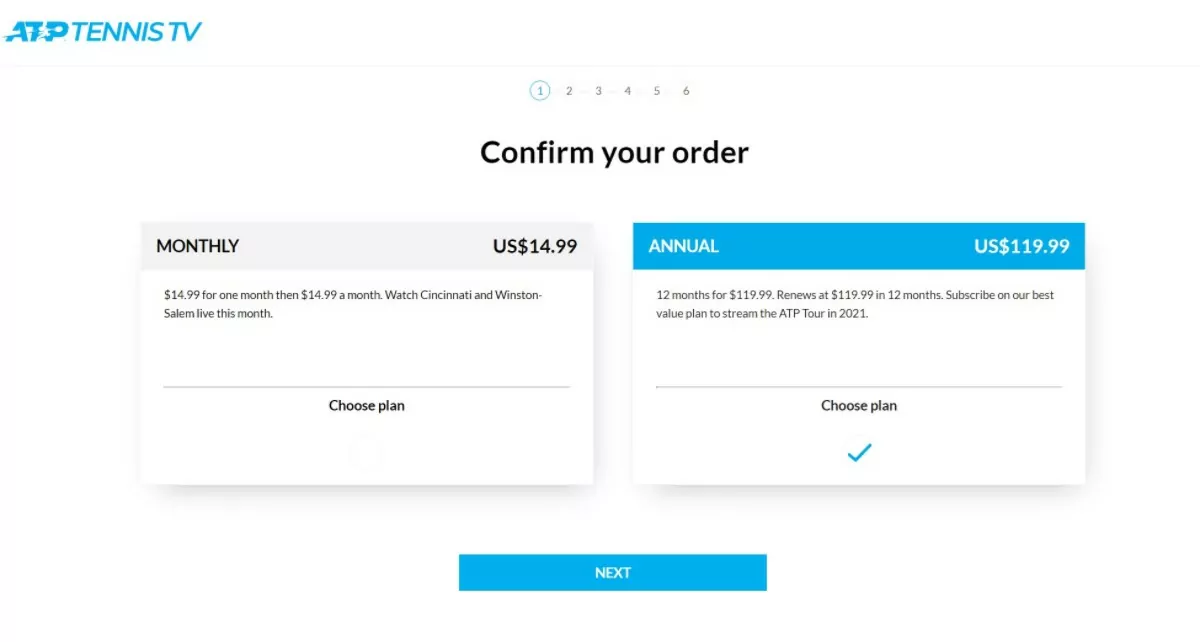
With Babbel, you get more options, with each named after the number of months that you get access:
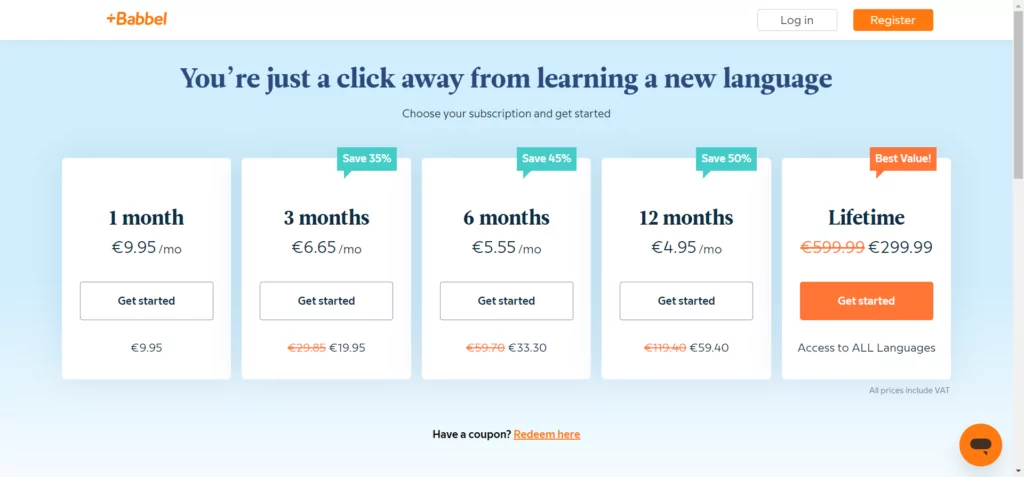
Common options here are names like:
- Daily
- Annual/Annually
- Weekly
- Monthly
- Quarterly
- Lifetime
- X months (e.g. 1 month, 3 months, 6 months, etc.)
- etc.
There’s nothing really creative about this structure, but the names make it very clear what subscribers get for their money.
2. User Type-Based Membership Levels
User type membership levels are subscription plans where each plan is targeted towards a specific type of user or group of users. Common examples are:
- Individual
- Student
- Family
For example, Spotify offers four different membership plans, each named after the type of user or users that the plan is focused on:
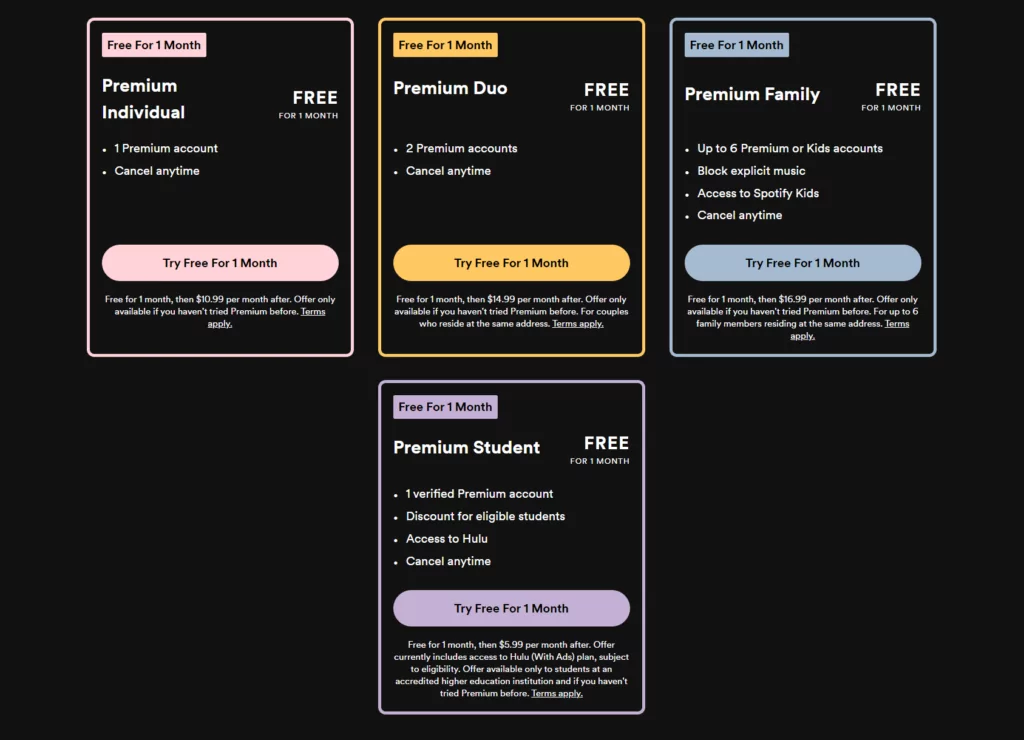
Apple Music uses almost the exact same structure, though it lacks the Duo plan and it offers the Voice plan:
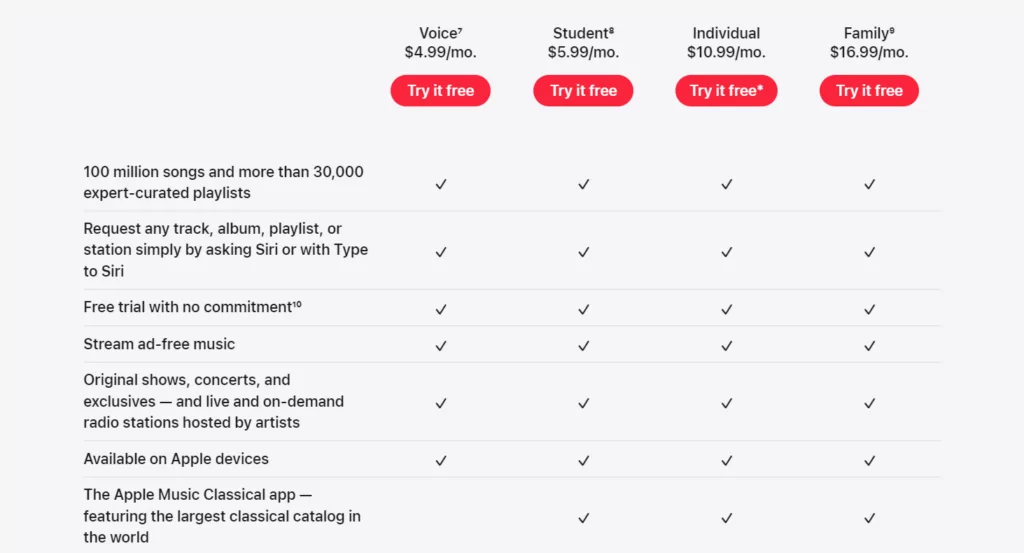
Or, if you sell to both individuals and businesses, you could use a structure like this:
- Individual
- Team
- Enterprise
For example, Wrike offers plans for small teams, businesses, and enterprises, with names to match.
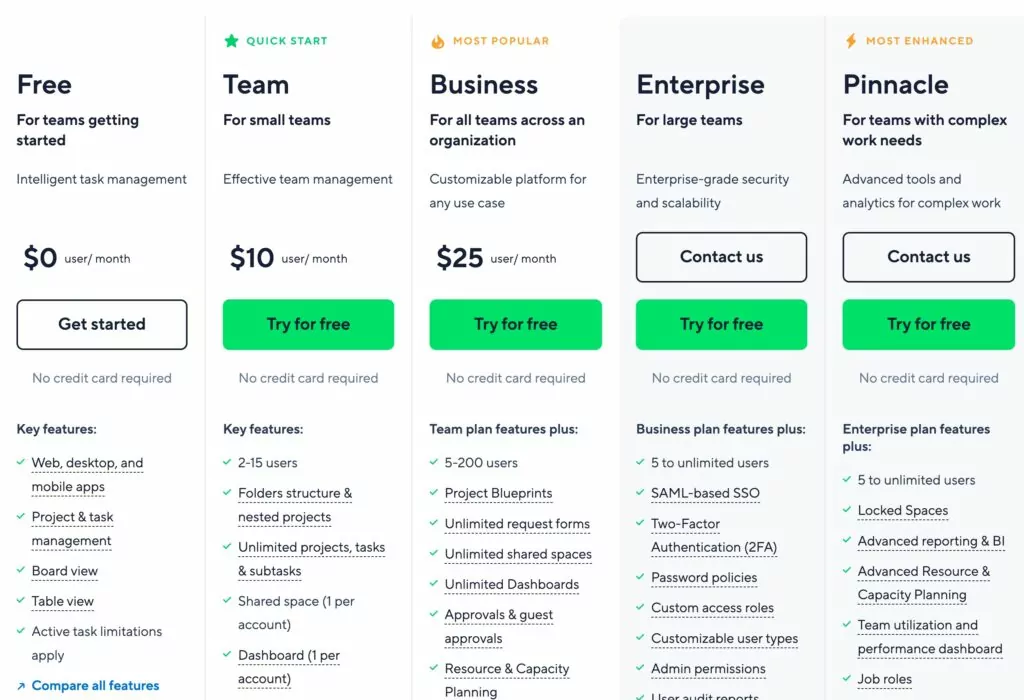
This type of naming structure can be especially useful if you sell both individual and group membership plans because it instantly lets people know which option is right for their situation.
3. Content Delivery Type-Based Membership Levels
If you offer different ways to consume content that vary between plans, using a content delivery type-based membership naming convention can be a good naming convention to quickly tell subscribers how they’ll be able to consume content with each plan.
You’ll see this structure a lot with media companies and news organizations. For example, the Wall Street Journal offers membership levels for:
- Digital
- Print + Digital

These names certainly aren’t creative, but they do quickly let people know how they’ll be able to consume content with each plan.
You can also use this naming convention for video or audio content. For example, maybe you offer video content, but one membership plan only gets people access to HD content while the other offers 4K content.
4. Tiered/Content Access Membership Levels
Many membership sites use tiered membership levels. These are configurations where each level of membership gets access to different features, content, privileges, etc.
Unlike the previous membership naming structures, tiered membership levels open the door to a lot of creativity because you can use pretty much any name for each tier (which isn’t the case for some other naming conventions).
With that being said, you do still typically want to incorporate two details into your tiered naming convention:
- You should make the names relevant to your niche. This helps with branding.
- Even if you’re being creative, you still want to highlight the hierarchy. So your top-tier plan should be “better” than your entry-level plan. We’ll talk about this in more detail later on.
Going (formerly Scott’s Cheap Flights) is a great example of creative membership level names.
At first, the names seem pretty generic. After all, “Premium” and “Elite” are pretty common terms. But the magic is the fact that Going is focused on helping people find cheap airfare deals.
So instead of being generic, “Premium” and “Elite” are actually creative terms that line up with the fare classes that many airlines use.
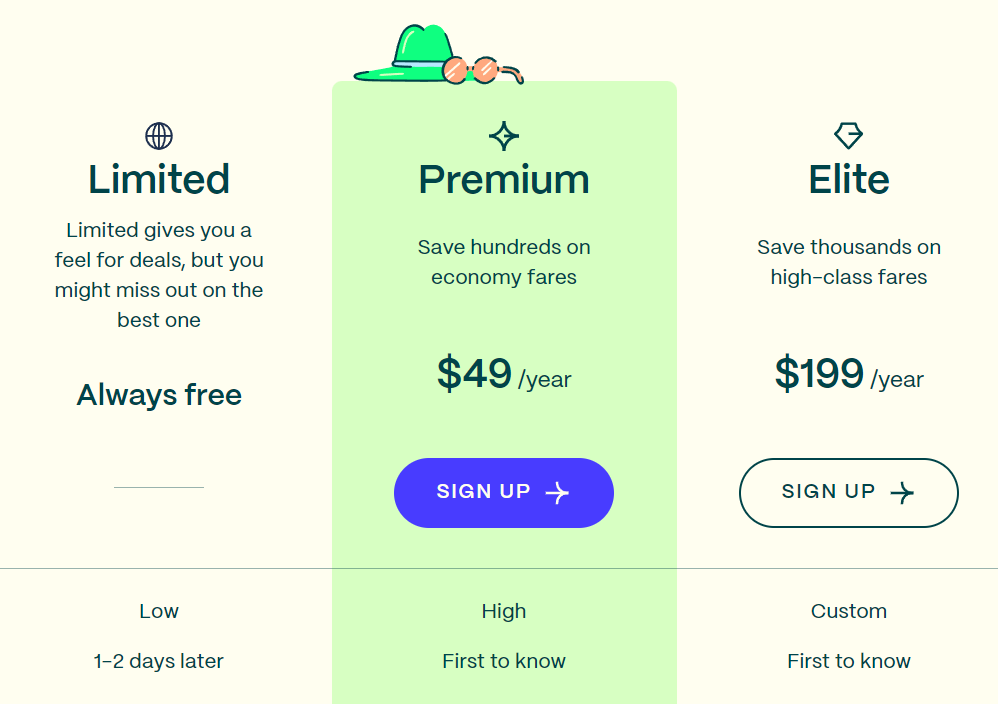
On the other hand, you don’t always need to be creative, and a lot of brands go for more “traditional” tiered membership level names like the following:
| First Tier | Second Tier | Third Tier |
| Bronze | Silver | Gold |
| Basic | Intermediate | Advanced |
| Starter | Pro | Premium |
This approach can be a good option if you’re in a more “traditional” niche or if your audience tends to be more traditional.
5. Supporter-Based Membership Levels
Supporter-based membership levels can be a great option for fan-based membership communities. That is, where the membership community is based around supporting a certain artist, typically with different perks based on the membership level.
For that reason, you’ll see this type of naming convention on a lot of Patreon membership communities, though you can use it with your own self-hosted community as well.
For example, Data School offers a supporter-based naming structure that also brings in some elements of tiered memberships:
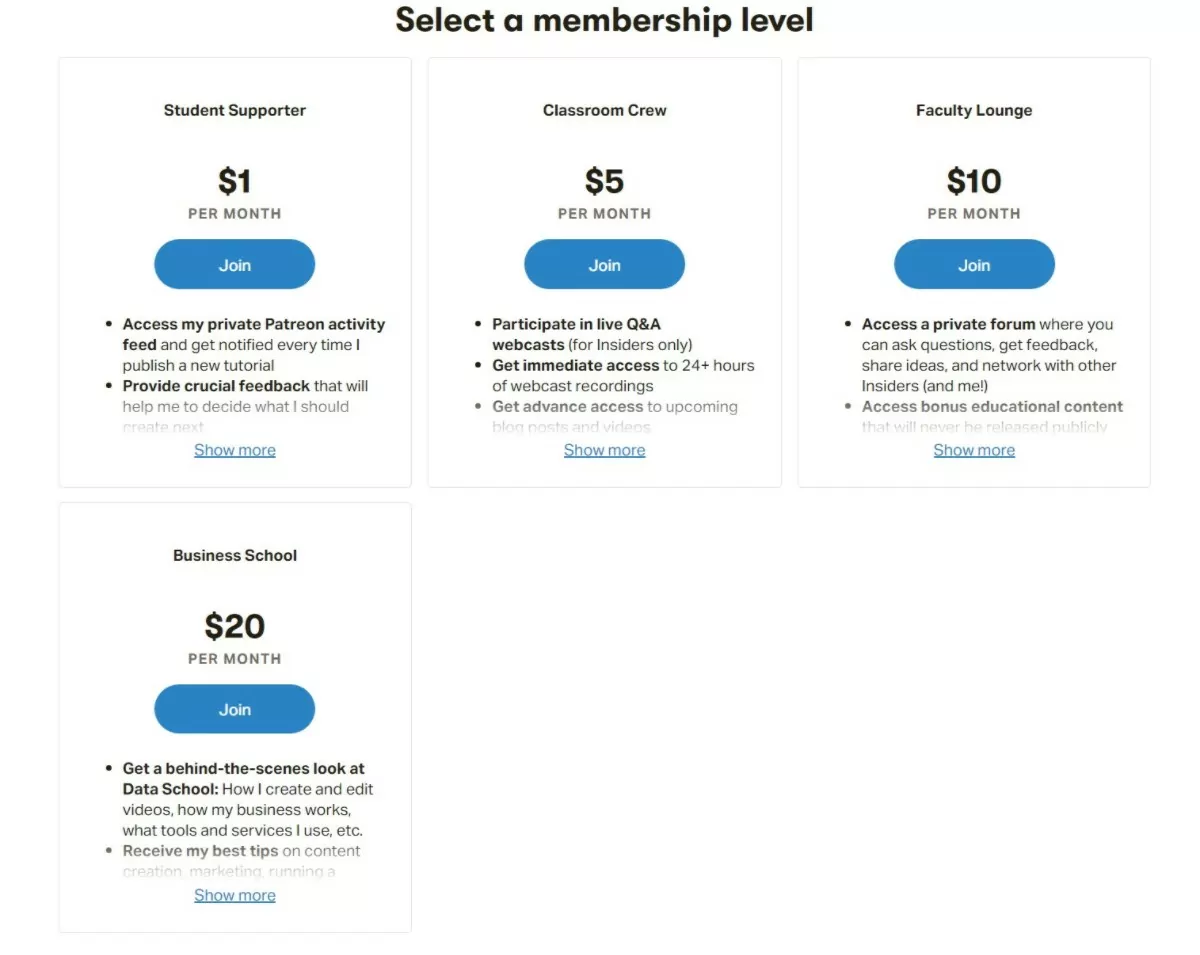
This approach also makes a great option for non-profits that rely on membership support. For example, the Smithsonian calls its members “Friends of the Smithsonian” and they are grouped into specific member role categories.
These are descriptive names that refer to the supporters themselves:
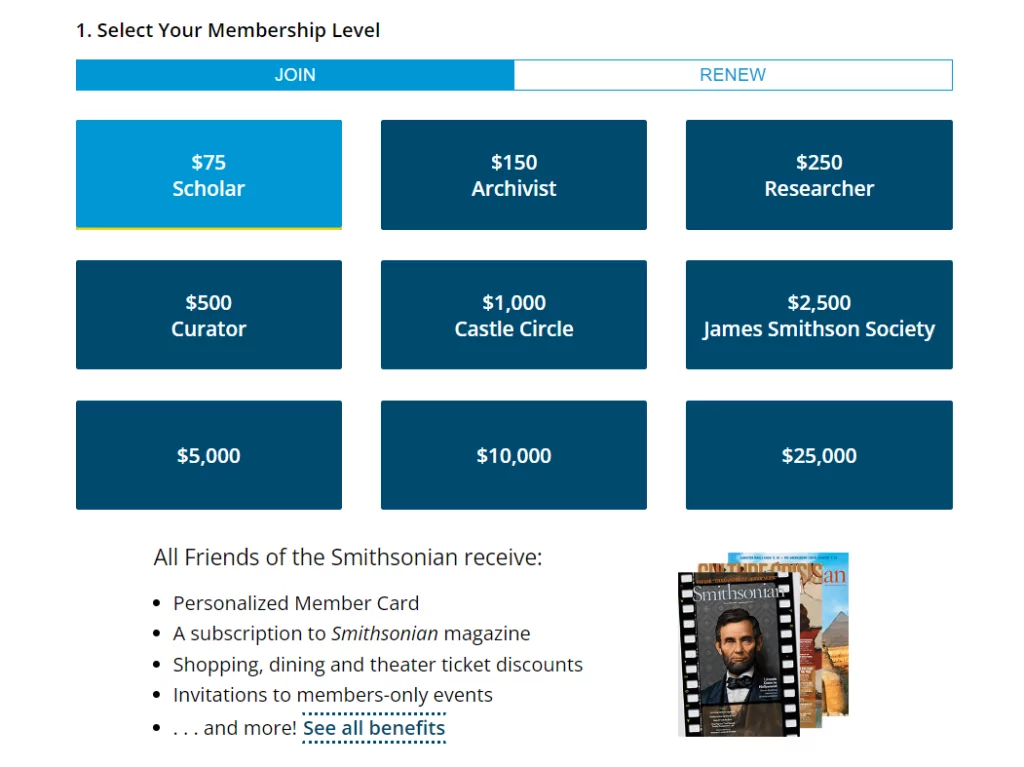
6. Interest-Based Membership Levels
Finally, another common membership tier naming convention is offering interest-based membership levels.
This approach is useful if you offer different plans that are each focused on a specific topic/interest.
For example, TradersFly offers separate membership plans all based around different areas of investing. To differentiate those different subscription plans, they name each plan based on its topic:

7. Aspirational Membership Levels
With an aspirational membership level approach, you can name your membership levels based on what members want to achieve with their subscription.
Not only do these membership levels inspire members, which can encourage them to join, but they also help members choose the right level by matching their aspirations with your offerings.
Treehouse, an online training platform for people who want to learn to code, is a great example of this, especially with the short explainer text below each level:
- Course – Give coding or design a try
- Courses Plus – Level up your learning
- Techdegree – Launch your career
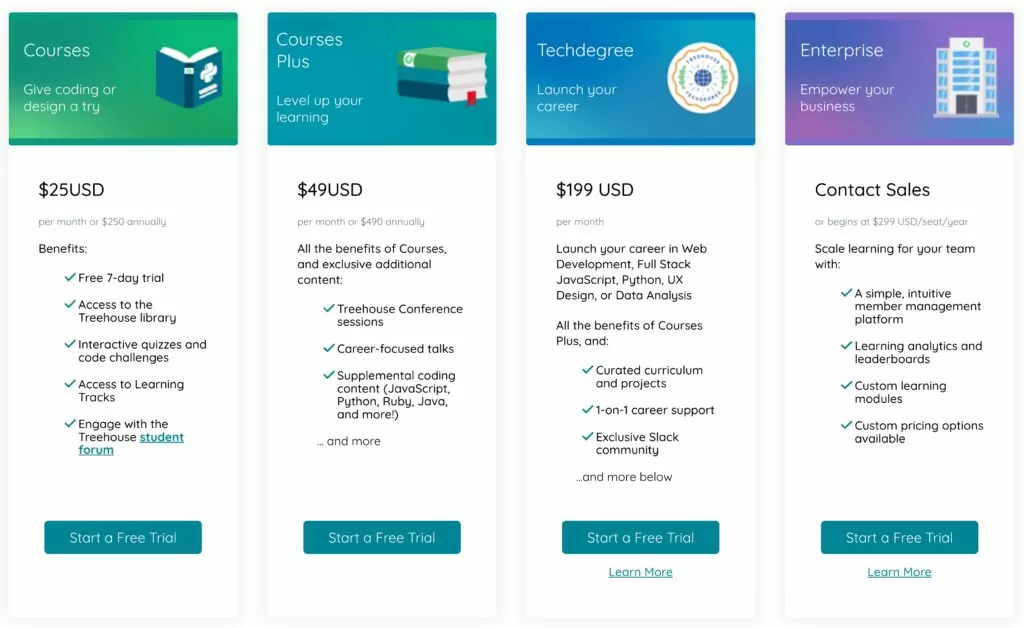
Basically, members can choose whether they aspire to just dabble in coding or actually learn enough skills to build a full career.
8. Support-Based Membership Levels
Not to be confused with the supporter-based membership levels that we covered above, support-based membership levels use a tiered structure based on the level of support that members receive.
For example, if you offer some type of instruction, you might have different membership level names where members get self-serve learning content, access to group classes/discussions, or access to one-on-one coaching.
Here’s a real-world example where TalkSpace has different membership levels for messaging therapy and video therapy.
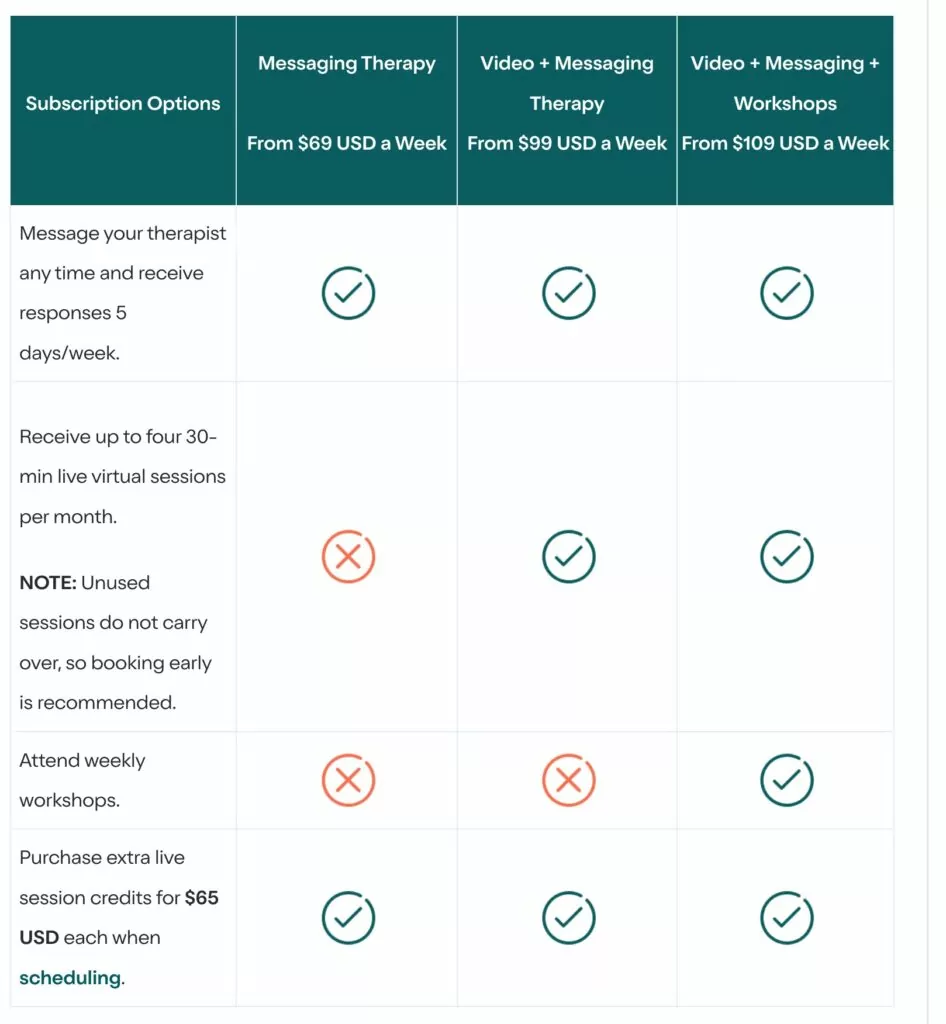
If you have this type of setup, highlighting those differences can be a really effective membership naming strategy as it will naturally push people toward the level of support that they desire.
This strategy is especially popular in the coaching or online learning spaces.
How to Come Up With Your Own Membership Level Names
To finish things out, let’s talk about how you can come up with subscription plan names for your own membership community.
Focus on the Differences In Your Plans
Before you can name your subscription tiers, you need to have a really clear idea of the differences in your plans. You probably already know these differences, but it helps to write them down just to put it into words.
Once you have a clear picture of the differences between your plans, you should already have a good idea of what type of membership level naming convention to use.
For example, if the only difference between your plans is the billing term, you should probably just use a simple price/term-based membership convention so that your members can intuitively know the difference.
If you have two plans with identical features and one plan offers monthly access and the other offers yearly access, it’s needlessly confusing to come up with special names for them – “Monthly” and “Annual” work just fine.
On the other hand, if you offer tiered plans with different features, then you can get more creative with your names.
Think About Your Audience
The next step in developing your own names is to think about your audience.
Who your members are will play a big role in whether you should keep things simple or use more creative and branded membership levels.
If you’re in a creative space with tiered membership levels, then you should probably come up with creative membership level names to reinforce your branding and connect with your members.
On the other hand, if you’re in a very serious space, then you might want to avoid creative names and just stick with something simple like Basic → Intermediate → Advanced.
Create a Clear Hierarchy (for Tiered Membership Levels)
If you offer tiered membership levels, it’s important that your naming structure follows a natural progression from the most basic tier to the most advanced tier to illustrate the hierarchy of your plans.
Here’s an extreme example to show why this is important:
Let’s say you have three membership levels:
- Tier 1 – basic features.
- Tier 2 – everything in tier 1 plus new features.
- Tier 3 – everything in tiers 1 and 2 plus new features.
Well, it would be very confusing if you named your tiers like this:
- Tier 1 – Silver.
- Tier 2 – Bronze.
- Tier 3 – Gold.
Everyone knows that silver is higher than bronze, so it would confuse your members if the naming hierarchy was off.
Of course, in the real world, your example probably won’t be that obvious, especially if you’re coming up with your own creative names.
This again ties in with knowing your audience…
It’s not necessarily essential that a random person can see the hierarchy in your plan names. But it is essential that someone in your target audience understands the hierarchy.
For example, if you have a membership community built around cricket (the sport), you could use cricket-related terminology for your membership level names. The hierarchy might not be clear to people who don’t understand the sport – but as long as cricket fans can understand it, that’s totally fine.
Nudge People Towards a Certain Plan
As we mentioned earlier, one reason that membership level names are important is because of the psychology behind them.
For tiered membership plans, you can use the naming structure to push people towards a certain plan.
Let’s look at an example to illustrate the point.
Say you have three different membership levels – tier 1, tier 2, and tier 3.
Let’s say you’re primarily using tier 1 as decoy pricing. That is, you don’t really want people to sign up for tier 1 – you’re mainly using it to push people towards tier 2.
Well, your membership level names can help reinforce that decoy effect by making tier 2 seem more desirable.
Maybe you have a site that teaches people how to play American football. You might name your plans:
- Practice squad
- Starter
- All-Pro
No one wants to be on the practice squad because those people aren’t on the “real” team. So by structuring your plans like this, you’re reinforcing the decoy effect and further nudging people towards tier 2.
We’re not saying that the name alone will push people towards tier 2. But if you’ve already set up the pricing structure and features in a way to nudge people towards tier 2, adding the naming convention on top can further reinforce what you’re trying to do and make your efforts more effective.
Create the Perfect Names for Your Membership Levels
If you want your membership site to be successful, your membership tier names are important.
How you’ve structured your community and plans will play a key role in how you name your membership tiers.
If you offer a single feature set with different billing terms, you’ll want to keep things simple and just use term-based membership names. But if you offer tiered memberships, you can spice things up with creative membership level names that help you connect with your target audience.
With the examples and tips in this post, you should now have the knowledge to pick the perfect names for your site.
If you’re still in the early stages of planning your membership community, we also have lots of guides that can help you figure out the technical details of running a membership site – check out these posts to get started:
- How to start a membership site
- Tips for choosing the best membership site software
- How to build a membership site on WordPress
- How to create a video-based membership site
Do you still have any questions about membership level names or creating a membership website? Let us know in the comments!
Related Articles
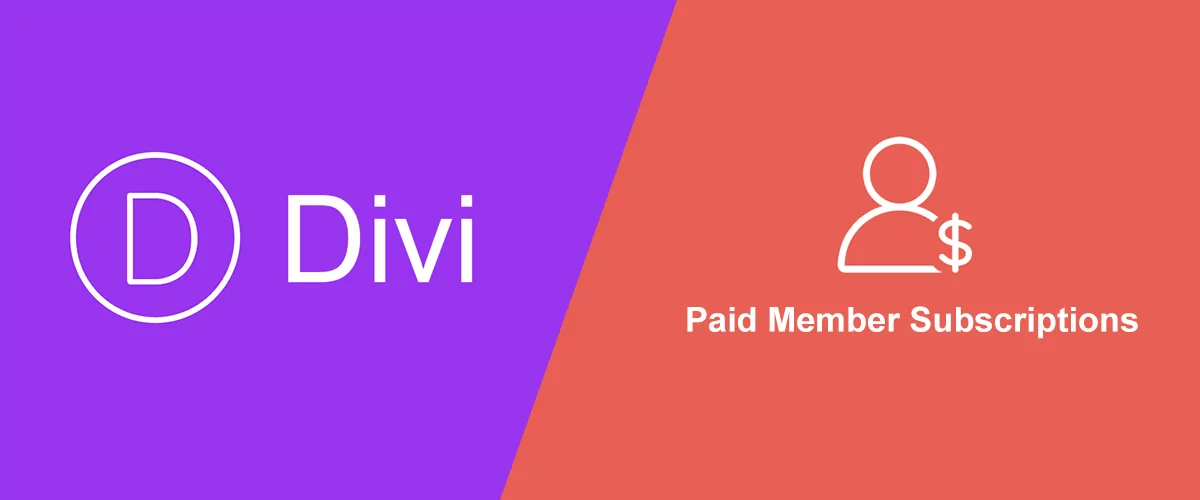
How To Create a Divi Membership Site
If you’re thinking of building a membership site in WordPress, you’ll need a solid theme and a membership plugin that pairs well with it. In this complete guide, we’ll show you how to create a Divi membership site using the popular Divi theme in combination with the Paid Member Subscriptions plugin.
Continue Reading
Membership Blog: Why Start One, Popular Examples and How To
I think you will agree starting a membership blog seems daunting, especially for a first-timer. Talk to just about any beginner who has never created a membership blog (or even a simple website), and they will field questions such as: Why should I start a membership blog? What kind of content, products, or services should […]
Continue Reading
Membership Page Design Tips & Best Practices
If you're new to subscription businesses, membership page design seems trickier than tackling a fire-breathing dragon. And you are not alone. The idea of creating effective membership page designs is far-fetched for many beginners. Because... Where do you even start? Starting or running a successful membership website is already tough as it is, let alone […]
Continue Reading

